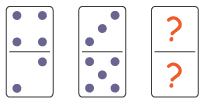These are our Bar Graphs (Harder) worksheets for primary school math and suited for math grades 2 to 6. Click on the previews to go to download page.
On this page you find our selection of primary math Bar Graph workheets. Our easier bar graph exercises are suited for math levels 2, the medium level bar chart worksheets for grade levels 3 and 4 and the harder worksheets for math years 5 and 6.
Students studying math according to the Singapore math curriculum will start learning about bar graphs in grade 2. Another name for bar graphs is column charts. We offer grade 2 column graph material based on reading and drawing bar graphs with scales of 1, 2 or 5. Doing the graphing exercises on our worksheets math students will have to analyze, collect and organize data and use this data to answer all kind of math questions based on the second grade math curriculum such as addition, subtraction and logic reasoning. We feel it's more important to use the data presented in the bar chart than just being able to draw one.
Our grade 3 and 4 bar graph exercises have larger scales (up to 100) and are covering the basic operations, money problems and average calculation. All off course in alignment with the other third and fourth grade math concepts.
More challenging are the math class 5 and 6 bar graph worksheet that will involve ratio and percent calculations. Students are required to analyze both single as double bar graphs. We have used a lot of question marks (unknowns) on the scale axis to make the graphing exercises even more challenging. Students will first have to figure out the proper scaling of the bar graphs which we feel encourages and enhances focus and understanding.
Some of our grade 6 bar graph worksheets consist of clues, with ratios and percents, necessary to make or complete a graph. This inductive way of using graphs is an excellent way of enhancing both math as logic skills.
- Being able to analyze or collect data sets
- Being able to classify and organize data
- Being able to draw/make bar graphs graphs given a data set
- Being able to read and use bar graphs
- Being able to use different scale (axis) sizes
- Being able to solve unkowns in the graphs scales
- Solving (word/math) problems using the given represented information
- Being able read bar charts both horizontally and vertically
- completing a table using the data in a graph


 Bar Graphs (Harder)
Bar Graphs (Harder)













